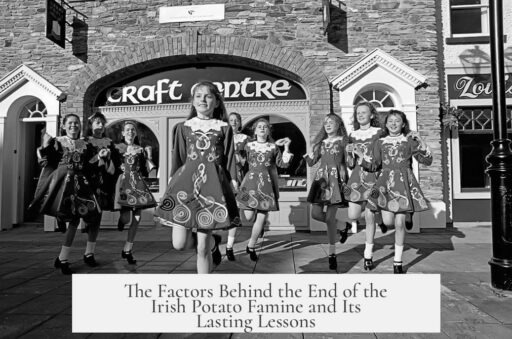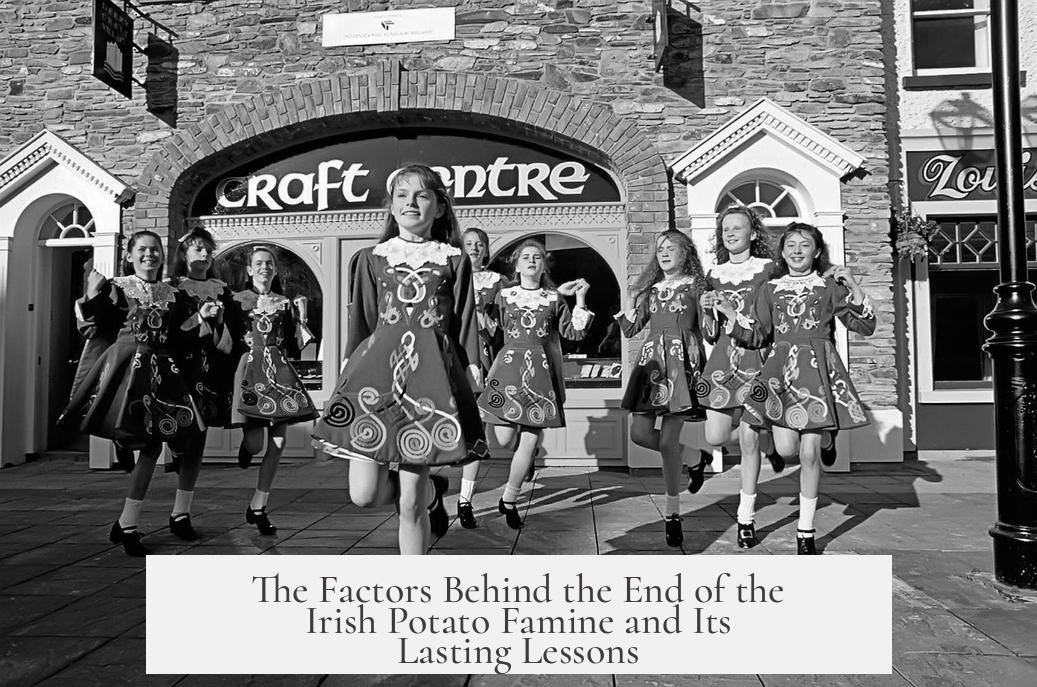The Irish Potato Famine ended gradually due to the decrease in blight severity, changes in potato cultivation, and demographic shifts. There was no single event marking its end; instead, conditions slowly improved after 1848, especially in certain regions.

The potato blight caused by Phytophthora infestans began to affect fewer crops from 1848 onward. Farmers began replanting potatoes, and the famine’s reach narrowed geographically. While western Ireland continued to struggle, the southeastern parts saw much better conditions. The famine thus faded gradually, rather than stopping abruptly.
A key factor was changing potato varieties. Ireland had relied heavily on the Lumper potato, a single variety well-suited to local conditions but extremely vulnerable to the blight due to low genetic diversity. The Lumper’s rapid decay increased crop failures drastically.

As the blight took hold, farmers started switching from the Lumper to other potato types. These new varieties generally remained vulnerable to blight but were less susceptible than the Lumper. This shift reduced the overall impact of each outbreak, allowing partial recovery over time.
| Factor | Explanation |
|---|---|
| Monoculture | Widespread use of Lumper potato increased vulnerability |
| Shift in Varieties | Adoption of less vulnerable potatoes helped resist blight |
| Blight Decline | Natural reduction in blight severity after 1848 |
| Population Drop | Smaller population reduced pressure on potato production |
The population crash also played a role. The famine greatly reduced Ireland’s population, especially among poor land-renters dependent on potatoes. This smaller population lessened the overall demand for potatoes, easing pressure on crops and possibly helping the blight’s decline.

Overall, the Irish Potato Famine ended through a mix of biological, agricultural, and social changes. No official date marks its conclusion. Instead, improved conditions and survival strategies led to a gradual recovery.
- The blight gradually weakened after 1848, allowing replanting.
- Farmers shifted away from the highly vulnerable Lumper potato.
- Other potato varieties, more resistant, began to be used.
- Population decline decreased reliance on potatoes.
- The famine faded regionally before ending nationally.
How and Why Did the Irish Potato Famine End?

The Irish Potato Famine did not end with a bang but a slow fading away of its devastating grip, roughly between 1848 and 1852. Unlike a dramatic battle ending or a government decree, the blight simply ran its course. No party could point to a specific day when the famine officially stopped; instead, it was a quiet fading tied to nature, new farming practices, and a tragic shift in Ireland’s population.
So why did the famine finally end? Let’s dig into the details and unravel this complex chapter of history.

The Blight’s Gradual Decline: Nature’s Slow Retreat
After peaking in 1847, the notorious potato blight started losing steam. By 1848, the pestilence affected fewer crops. Farmers began cautiously planting potatoes again.

This didn’t mean full recovery was instant. The famine stopped being a nationwide disaster and became a regional problem. For example, the West of Ireland still struggled, while the Southeast saw gradual improvement. Rather than a clear-cut revival, the famine “petered out” over several years.
In a way, nature took its own sweet time curing the land.
One Potato to Rule Them All? The Problem of Monoculture
One critical reason the blight hit Ireland so hard was a single potato variety: the Irish Lumper. This potato was the country’s dietary foundation, especially for poor farmers on tiny plots of rented land.
The Lumper was a star in many ways. It grew fast, produced large tubers, and tolerated wet soil and poor nutrients better than other varieties. This made it ideal for feeding families on minimal land.
But here’s the kicker: its genetic makeup made it incredibly vulnerable to Phytophthora infestans, the fungus-like organism that caused the blight. Once infected, the Lumper practically dissolved into mush. This rapid spread meant whole crops were wiped out in no time.
Variety Is the Spice of Life, and Crop Survival
As the blight decimated the Lumper, farmers started turning to different potato varieties. These new strains weren’t perfect; most remained somewhat vulnerable to the blight. However, they did not collapse as catastrophically as the Lumper.
This switch from monoculture to a mix of potato varieties helped farmers reduce the total impact of future blights. It was like diversification in an investment portfolio—spreading risk to avoid complete ruin.
The Grim Mathematics Behind the Famine’s End
One somber fact that factors heavily into why the famine ended is population decline. By 1851, Ireland’s population dropped by about 20-25% due to death and emigration.
This meant fewer mouths to feed and less demand on the potato crops. The reduced number of poor tenant farmers relying solely on potatoes to survive altered the farming landscape as well. In a tragic twist, the smaller, malnourished population helped lessen the blight’s environment, indirectly aiding its gradual retreat.
What Can We Learn From This Sad Journey?
- Monoculture equals vulnerability: Relying on a single crop or variety can lead to disaster.
- Diversity in farming is crucial: Different potato types helped curb the raw damage.
- Famine response is complex: There was no silver bullet or clear government end date.
- Population dynamics impact agriculture: The tragic population crash inadvertently played a role in ending the crisis.
So, how did the Irish Potato Famine end? It’s a story of a relentless disease running out of crop victims, farmers learning hard lessons about crop diversity, nature healing itself gradually, and a human toll that reshaped an entire country’s population.
“The famine was not ended by decree but by a slow combination of biological, social, and economic changes.” — Historian Analysis
Could This Happen Again?
Potato blight remains a problem for farmers today. Modern agriculture has better tools like resistant varieties and fungicides, but complete immunity remains out of reach. The Irish experience warns us how monoculture and ignoring genetic diversity can escalate agricultural crises.
It also makes you wonder: How prepared are we right now for similar risks to our modern food systems? Are we putting all our eggs—or potatoes—in one basket?
Wrap-Up: The End Haunts With Lessons
The Irish Potato Famine’s end is not marked by celebration but reflection. It ended because the Lumper variety failed, farmers diversified, the blight lost steam, and the population tragically shrank.
History teaches us resilience comes from adaptation and variety. While the famine’s blight eventually lifted, the scars of starvation and migration left deep in Ireland’s soul and demography.
In sum, the Irish Potato Famine ends not like a single event, but a slow, painful fade out—a cautionary tale on food security, agricultural diversity, and human tenacity.




